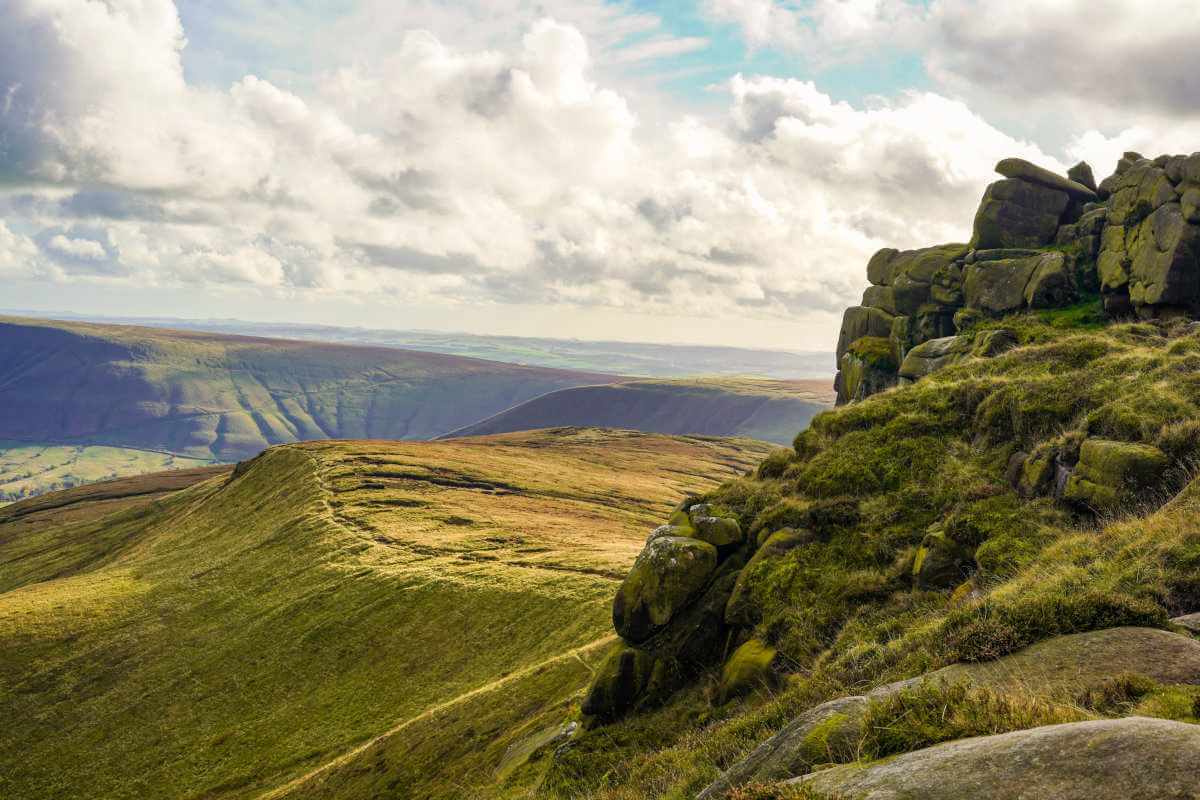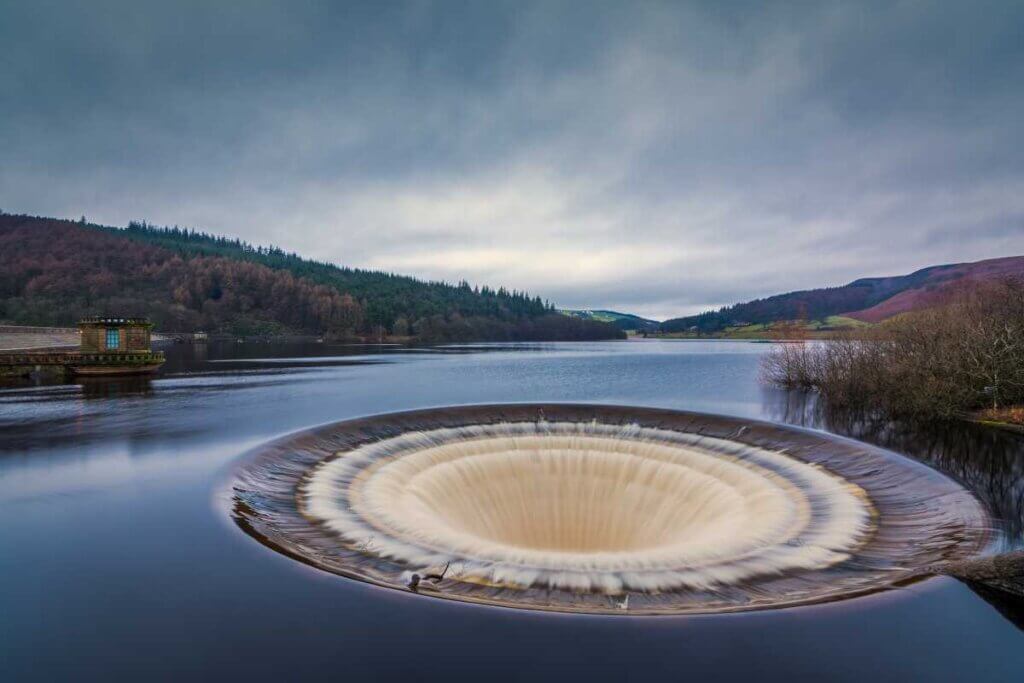*FYI - this post may contain affiliate links, which means we earn a commission at no extra cost to you if you purchase from them. Also, as an Amazon Associate I earn from qualifying purchases. Check out our Privacy Policy and Disclosure for more info.
From majestic mountain views to fascinating caves under the ground, those looking for places to visit in the Peak District will find a variety of landscapes and unique places to explore.
England’s Peak District is most known for its steep ridges, peaks and valleys, but there’s more to discover than just the (admittedly gorgeous) natural views.
In this post, we’ll be sharing our top picks for places to visit in the Peak District, including the prettiest towns and most unusual attractions.
We hope you enjoy learning about this rugged region and be sure to let us know in the comments which Peak District must-sees we should add to our list!
The Dark Peak
The Peak District National Park makes up most of the Dark and White Peaks, although there are parts of the official Peak District outside the edges of the national park. The Dark Peak covers an arc-shaped section of the park on the north, east and west sides.
This part of the Peak District is known for its moorland, bogs and peat. This is the higher section of the Peak District National Park and it’s called ‘dark’ because it’s usually much wetter than the White Peak. Even though the Dark peak is higher, the limestone in the ground is covered by gritstone and shale, which is soft and absorbent.
The scenery in the Dark Peak is very dramatic, with sharp gritstone edges and moors covered in heather. Many of the most popular peaks for hiking are located here, some of which we will talk about more soon!
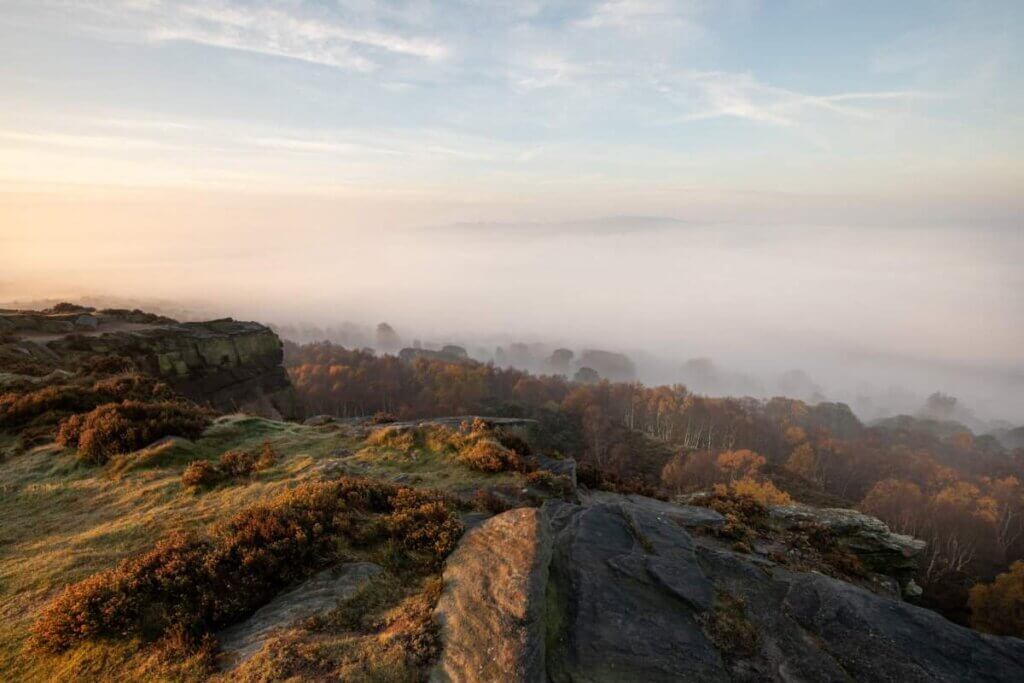
The White Peak
The central and southern part of the Peak District is what is known as the White Peak because there’s so much grey/white limestone to be seen in the area. This section of the national park is a natural plateau with lots of exposed rocks and crags, as well as many settlements.
Because limestone is so porous, this region provides well-drained pastures that are ideal for farming cattle and sheep. Many buildings and fences are also built from limestone, which is what makes the area seem ‘white’.
Some of the largest and most popular towns in the Peak District can be found within the White Peak, along with some other unique sights. Thor’s Cave, in particular, is a massive karst cave located in the Manifold Valley (part of the White Peak) that’s popular with both rock-climbers and sightseers.
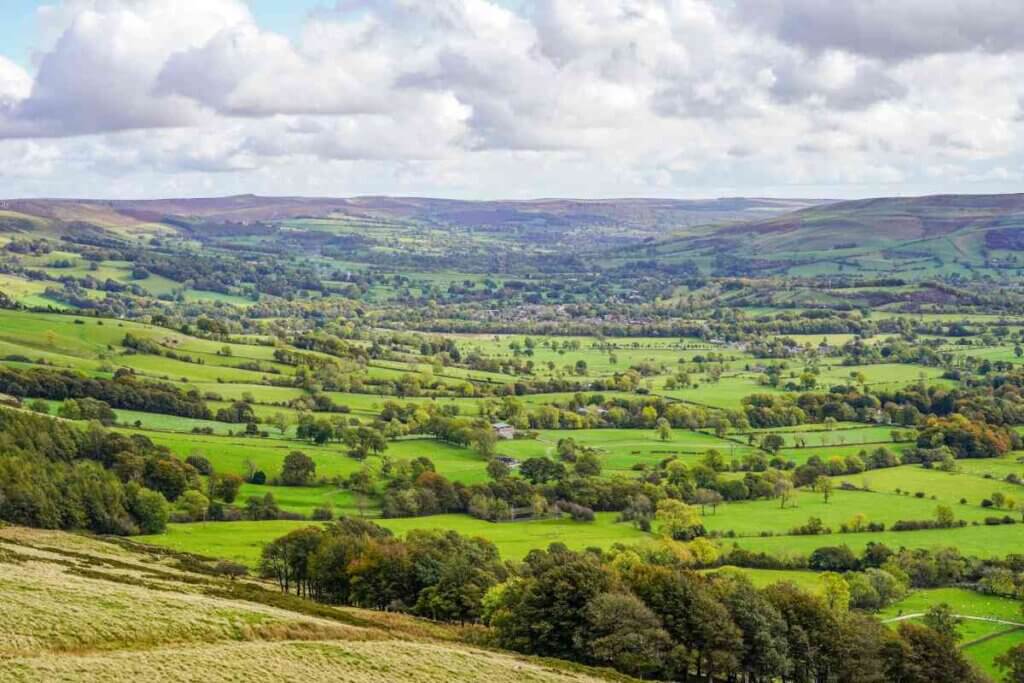
Kinder Scout
Kinder Scout is the highest point in the Peak District, and one of the best places to visit in the Peak District for incredible views over the countryside. It’s also a very significant part of the Peak District National Park because of the Kinder Trespass.
Before the 1930s, much of England’s open country was privately owned and closed to walkers. On the 24th of April 1932, a ‘mass trespass’ was organised on Kinder Scout to protest this denial of access and ultimately led to the National Parks Legislation which opened National Parks in England. The Peak District National Park was actually the first national park established in England and Wales!
Nowadays Kinder Scout is a wonderful spot for challenging but rewarding hikes over rocks, streams, peat and even a waterfall. There’s also a Mermaid’s Pool to discover, as well as interesting rock formations known as Pym’s Chair and the Boxing Gloves. The villages of Edale and Hayfield are the best places to base yourself to explore Kinder Scout.
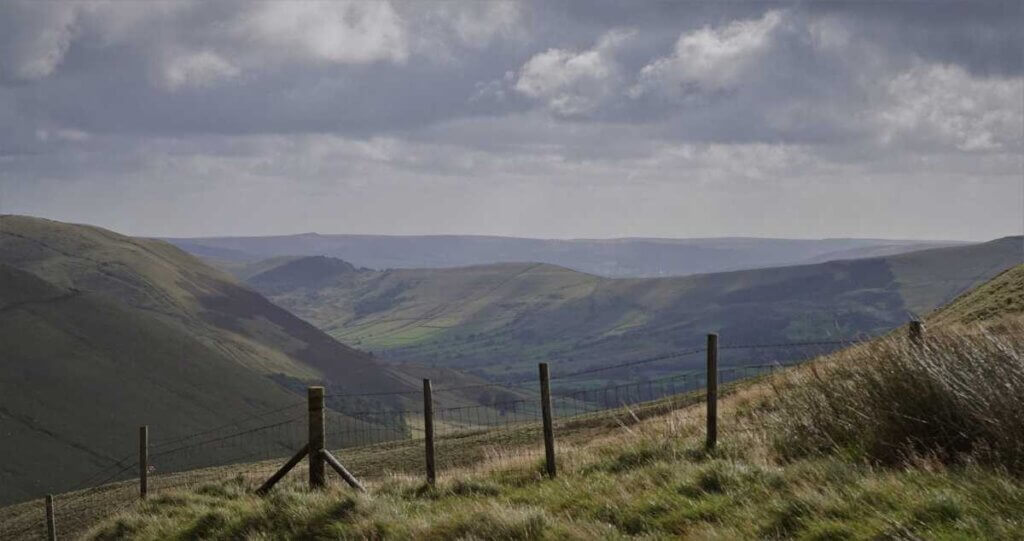
Mam Tor
One of the most interesting things to see in the Peak District is the hill known as Mam Tor. The name means “mother hill” and it’s named that because it has a lot of mini hills below it.
Mam Tor is sometimes also called the Shivering Mountain because it’s very prone to landslips on the eastern side due to unstable layers of shale, which is what made all the mini hills. These landslips even caused a road to be swallowed up, but they happen slowly, so you won’t be in danger if you want to hike Mam Tor!
There are a few different routes to walk to the top of Mam Tor, where walkers will be rewarded with amazing views of the Hope Valley and the town of Castleton. On clear days it’s even possible to see all the way to Manchester. There are the remains of a late Bronze Age and early Iron Age hill fort on top of Mam Tor. It’s also a popular spot for paragliding from the top of the hill.
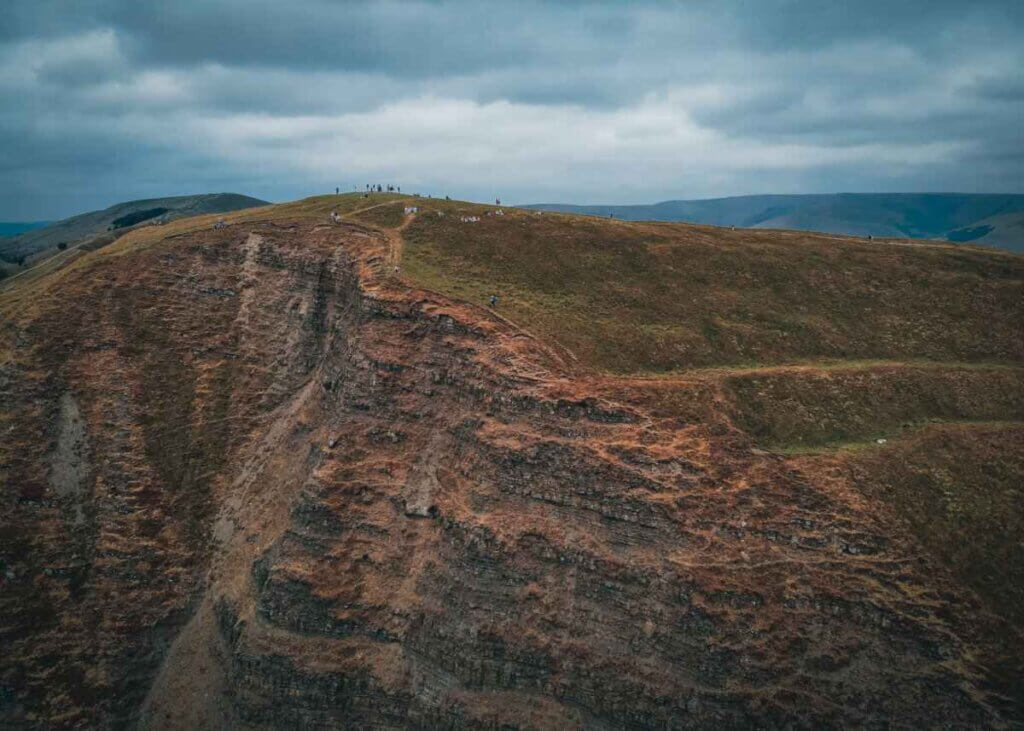
Castleton
The village of Castleton sits in the lee of Mam Tor and is one of the best places to base yourself for hiking the hill. But the village itself is also worth spending some time in, whether you plan to visit Mam Tor or not.
Castleton contains a lot of lovely pubs, tea shops and cosy accommodation options for hikers or cave enthusiasts. It’s the ideal base for exploring the nearby show caves, where lead and the semi-precious stone Blue John were once mined. In fact, Castleton and the caves around it are the only places in the world where Blue John is found!
In the Treak Cliff Cavern visitors can see the largest known single piece of Blue John, known as the pillar. Peak Cavern is the largest natural cave mouth in Europe and is often used for special events like Christmas carols. In Speedwell Cavern visitors can ride underground on a boat to the ‘Bottomless Pit.’
Overlooking Castleton is the ruins of Peveril Castle (pictured below), which was built for William Peveril, one of William the Conqueror’s favoured knights. A walk up the steep steps provides more stunning views over Castleton and the Hope Valley.
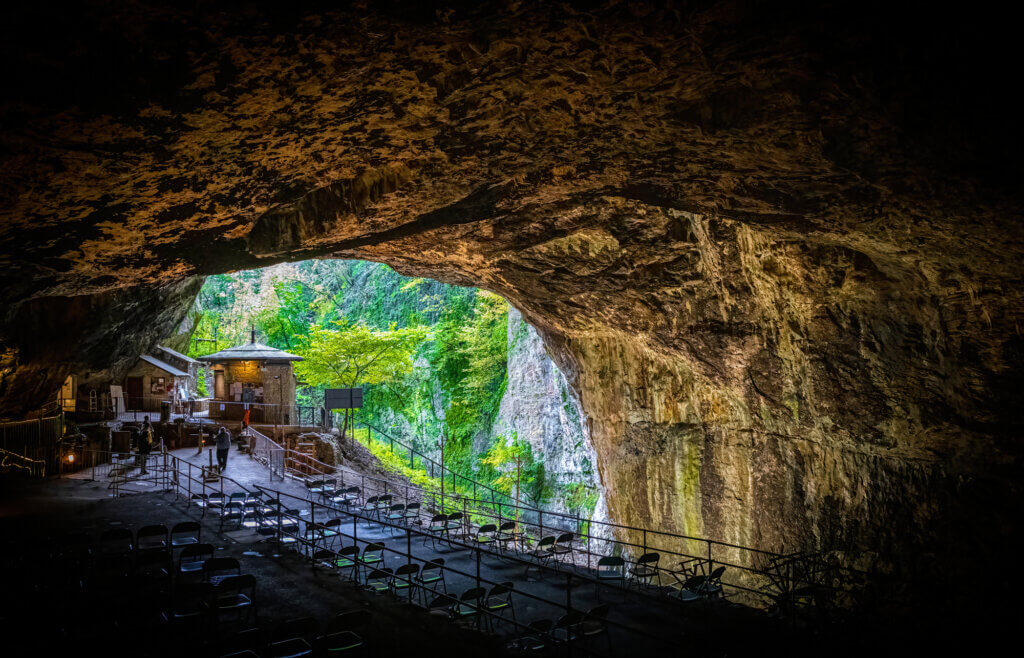
Dovedale
Dovedale Valley is one of the most popular Peak District destinations, attracting more than a million visitors each year! The valley is cut through by the River Dove and features some picturesque stepping stones across the river a short walk from the Dovedale car park.
Up the road from the stepping stones, there’s also a walk to the top of Thorpe Cloud, where visitors can enjoy panoramic views over the whole Peak District.
The whole area is very popular with daytrippers and is perfect for a picnic. Other spots nearby for a walk include the limestone promontory known as Lover’s Leap, the rock formation of Ilam Rock and the narrow stone Viator’s Bridge.
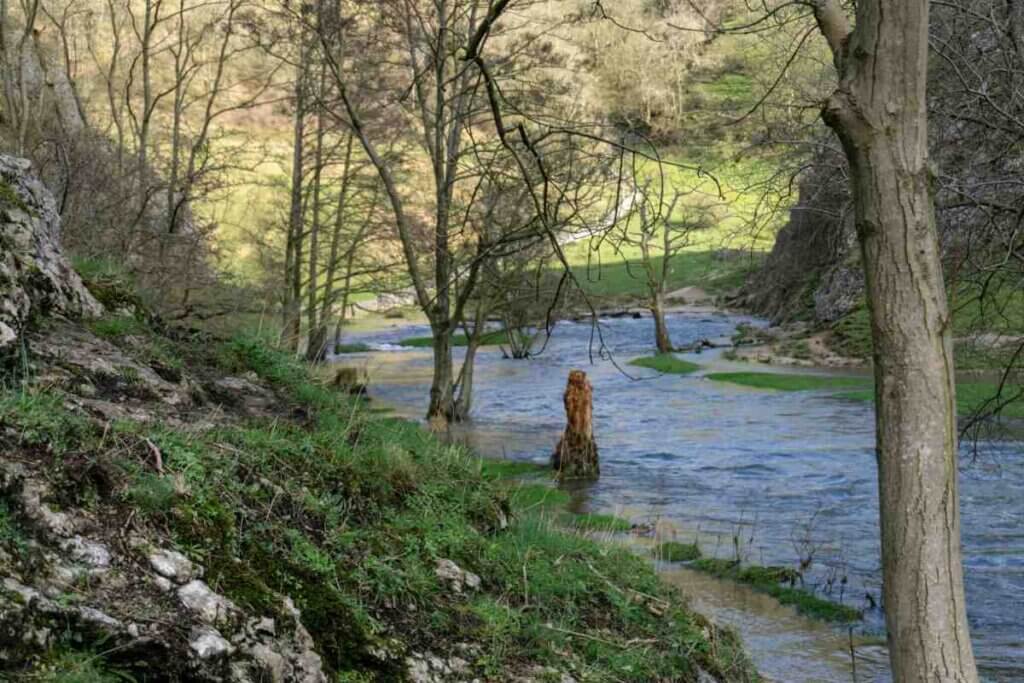
Bakewell
For an adorable British town and some of the best Peak District tourist attractions, you can’t miss Bakewell. Bakewell is the largest town in the Peak District, so it makes for a great base to explore the wider area.
Don’t forget to explore the town itself though! Bakewell is filled with pretty stone buildings and quaint courtyards, plus it’s located on the banks of the River Wye. There’s a beautiful medieval stone bridge across the river, with five arches. Painters and photographers alike love heading to Bakewell to capture the pretty scenery.
Of course, Bakewell is also famous as the home of Bakewell pudding, a popular British dessert made from egg and almond paste on top of a flaky pastry base, with jam on top of all that. There are three shops in Bakewell which claim to own the original recipe, try all three (for research purposes) and see which you like best!
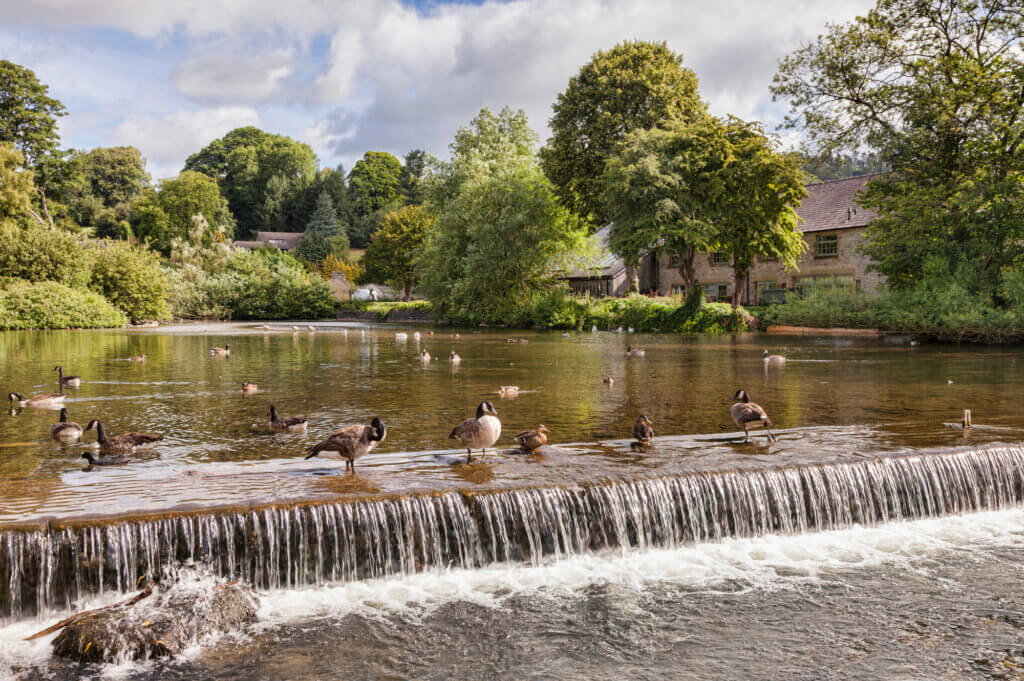
Buxton
Known as a popular spa town, as well as the highest market town in England, Buxton is another beautiful must-see in the Peak District, with many examples of both Georgian and Victorian architecture to discover, as well as lush baths.
Back in the day, Romans developed a settlement here, known as Aquae Arnemetiae (“Baths of the grove goddess”) because of the natural geothermal spring. The town was then developed by the Dukes of Devonshire into a spa town in the Victorian era, and even today, they can be enjoyed as part of the Ensana Buxton Crescent Health Spa Hotel.
Besides historic baths, Buxton is also home to an impressive Opera House, along with multiple heritage-listed buildings, shops, cafés and restaurants.
For those willing to travel a little further, Poole’s Cavern on the outskirts of the town is one of the most impressive limestone show caves in England and a tour through the illuminated crystal formations is a must.
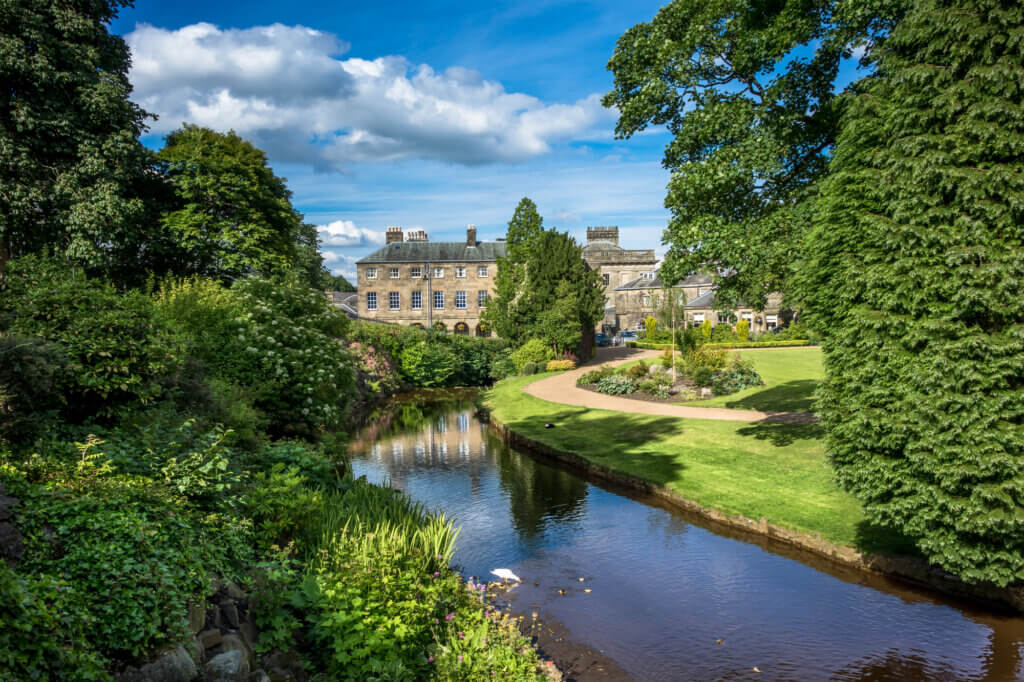
Matlock Bath
Matlock Bath is definitely one of the best places to go in the Peak District for a relaxing getaway. It’s a pretty village and spa town built along the steep sides of the gorge on the River Derwent.
For a small village, Matlock Bath packs a big punch when it comes to things to see and do! It was developed as one of the country’s first tourist destinations in the 17th-century and was later dubbed ‘Little Switzerland’ by the Victorian poet Lord Byron. Today, a visit to Matlock Bath provides enchanting riverside walks as well as the opportunity to explore some show caves.
The Heights of Abraham is a wooded park on top of the gorge, that can be reached by a scenic cable car or a steep zig-zag path. For children, there’s the Gulliver’s Kingdom Theme Park, and in the village itself, there’s an aquarium.
In September and October, the riverside is illuminated during the “Venetian Nights”, which also includes parades of decorated boats.
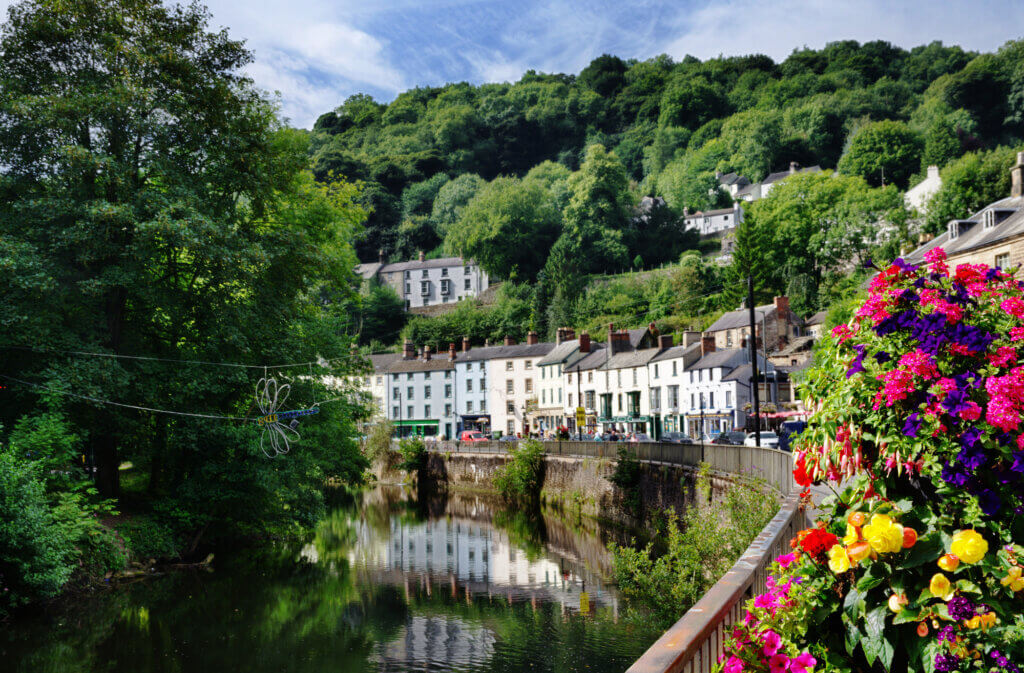
Chatsworth House
The stunning and famous Chatsworth House is one of the most popular Peak District attractions for very good reason. Many people associate it with the fictional Pemberley estate owned by Mr Darcy in Pride and Prejudice, as it’s been used for filming in both the 2005 film version of ‘Pride & Prejudice’ and the television drama ‘Death Comes to Pemberley’.
Chatsworth House was also a major filming location for the 2008 film ‘The Duchess’ starring Keira Knightley and Ralph Fiennes, as the film is about the real-life 5th Duke and Duchess of Devonshire who lived in the house. It has been the family estate of the Cavendish family (who hold the title Duke/Duchess of Devonshire) for over 500 years.
Although Chatsworth House is still a family home, parts of it are open to the public between March and September. It’s often called “Britain’s favourite country house” as both the grounds and rooms on display are stunning. During the opening times, visitors can enjoy seeing collections of paintings, furniture, Old Master drawings, neoclassical sculptures and books inside the opulent rooms.
The wider park surrounding the house is also incredible, with a cascade and fountain as the centrepiece, along with a maze, a greenhouse, and different formal gardens.
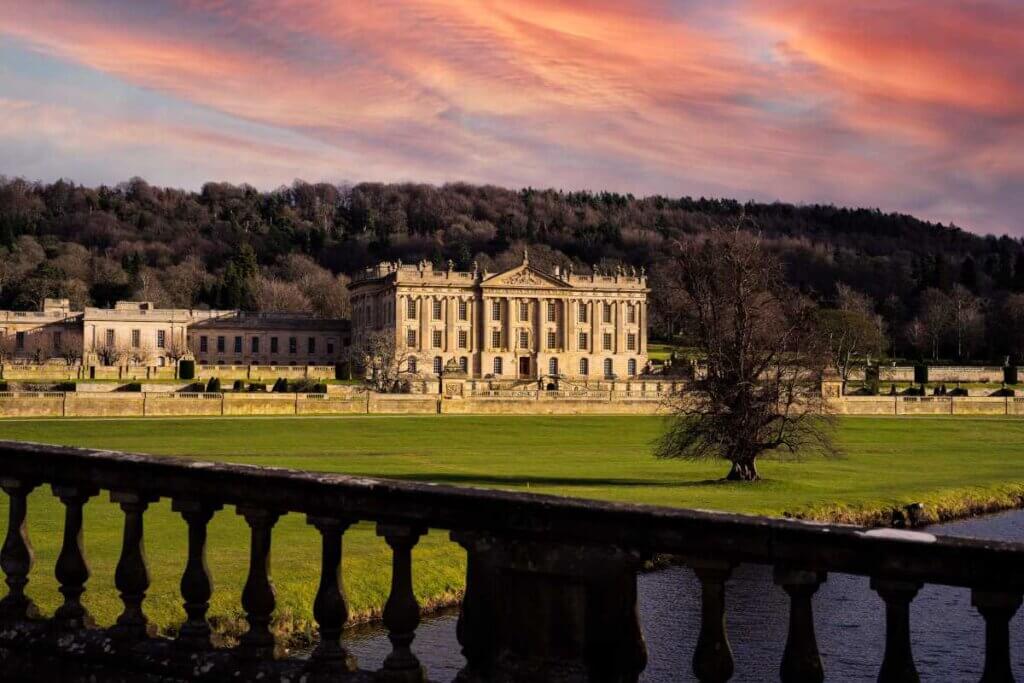
Ladybower Reservoir
The Ladybower Reservoir is one of the most unusual places to visit in the Peak District since part of it looks like something out of a science-fiction film!
Three reservoirs were built in the Upper Derwent Valley to supply the industrial towns around the Peak District with water. Ladybower is the lowest of the three, but arguably the most interesting and picturesque. The strange-looking water hole (pictured below) is one of two located in Ladybower Reservoir. Locally they are called ‘the plugholes’ but they’re basically a way of draining water into tunnels when the dams get too full.
The plugholes attract many visitors to see the phenomenon, but there are other attractions around the reservoir to explore as well. There’s a bronze-age stone circle overlooking the reservoir, known as the Hordron Edge stone circle. There are also many magnificent views to be enjoyed from the walking and cycling paths around the reservoir.
Have we missed any of your favourite places to visit in the Peak District?
Let us know in the comments!
